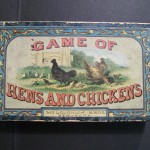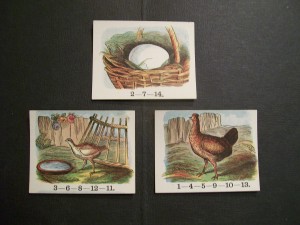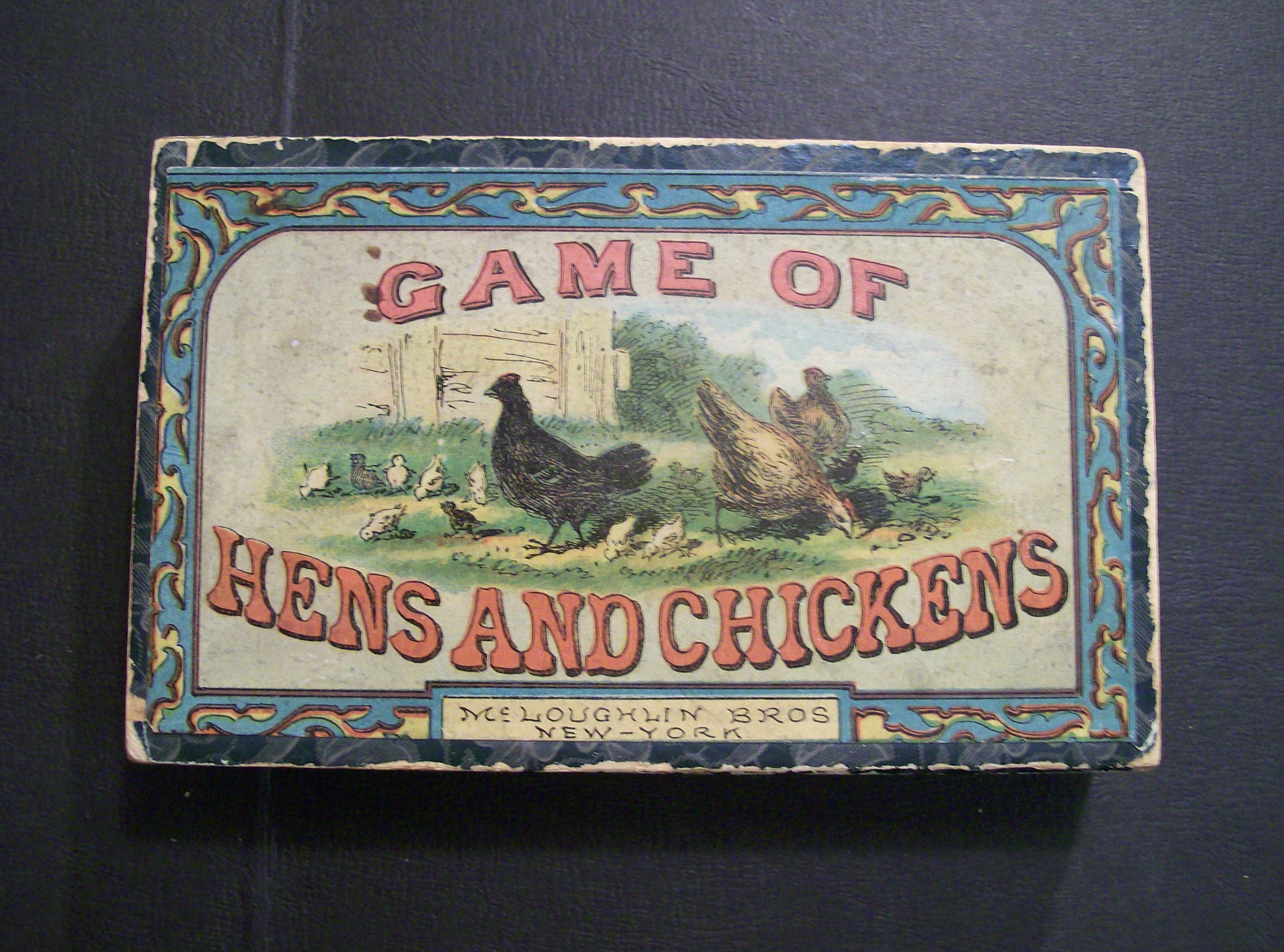The Game of Hens and Chickens published by McLoughlin Bros. in 1875 is a collectible old party game.

The directions for the Game of Hens and Chickens begins with describing the game as “easily learned, very entertaining, and for any number of players.” For the period of time in which it was published, Hens and Chickens offered a simple form of amusement. It was a game based on pure chance which could be played by either a small or large group of players. Although the object of the game was for a player to accumulate the most counters (points), the player’s main objective seemed to be to gather around and fully enjoy each other’s company.
Hens and Chickens consists of 49 cards, an indicator, and numbered counters. The counters are made up of tiny thick square pieces of paper which are marked with the numbers 1,2,3,5, or 10. The cards comprise of five different types of images. There is one card displaying the image of Uncle Ned and one card displaying the image of a Fox. Then there are 8 Egg cards, 25 Chick cards, and 14 Hen cards.
The game begins by placing the Uncle Ned card in the center of all the players. Next, an appointed dealer will shuffle and equally distribute the other cards, including the fox card, to all the players. The cards are stacked face up in front of each player. The counters are also equally distributed to the players based on their amounts. Each player should have the same number of cards and equal value of ‘counters’. Players then each place the amount of 10 in counters on Uncle Ned. He is considered the score-keeper.

The first player spins the indicator and adds the total pointed by both arrows. If this number is found on the player’s top card, he takes the value of 5 in counters from Uncle Ned. If the number spun does not appear on the player’s card, he gives the value of 2 in counters to Uncle Ned. The card is turned over.
The next player then spins, but adds his total to the previous player’s total spin, wrapping around at the number 15. For example, say the first player spun a total of 11 (the arrow pointed to a 5 and a 6) and the next player spun the same. The player’s final number to compare to his top playing card in order to determine the counters given or taken from Uncle Ned would be 7 (11 of the first player’s spin and then 4, stopping at 15 and beginning again at 1 for the amount of 7).

If a player’s number stops exactly on the number 15, he receives 5 points from Uncle Ned. When the Fox card appears on top of any player’s stack, that player will also receive 5 points from Uncle Ned, while all other players give 2 to him. The winner of the game is the player with the most points/counter values after all cards have been used.

The directions share the option to shuffle and play again for a large party group. The winner would not be determined until after a few more cards or rounds are played.
Even though Hens and Chickens is a game based all on chance, both in the cards being dealt and the spins, players enjoyed the undemanding type of entertainment. The gathering of friends or family, talking, laughing, and sharing with one another, was and still is treasured.
